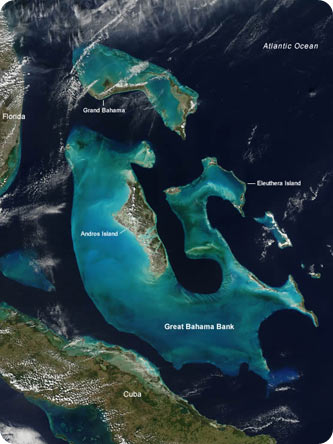170710-bahama.jpg

Aerial image of the Great Bahama Bank, the shallow water is a beautiful aquamarine color. Credit: NASA
To build an island these days, all you need is a few years, a few million tons of sand and rock, and a few billion dollars. In fact, developers from Hong Kong to Dubai have built islands with just that formula.
{mosimage}
To build an island the old-fashioned way, though, you need a lot more time -- but a lot less money.
An example is the Bahamas, the popular Caribbean island-nation off the coast of southern Florida. Its islands took millions of years to build -- and the lives of countless corals.
The islands are the highest points of two big plateaus. The largest is Great Bahama Bank.
It began building as early as the age of the dinosaurs, more than 65 million years ago. Large coral reefs built up at the bottom of the sea. As the corals died, their shells were compressed to make limestone. Today, the limestone beds that make up Great Bahama Bank are about three miles thick. The crust beneath them has sagged under the weight.
Before the last ice age, the bank stood up to 400 feet above the surface of the water. But about 10,000 years ago, our planet got a lot warmer. Giant glaciers melted, so global sea level jumped by hundreds of feet. Most of Great Bahama Bank was covered up -- but not by much. Most of the waters atop the bank are no more than 30 or 40 feet deep, which is one reason for their beautiful aquamarine color.
Today, only a few bits of the bank stick above the surface of the Caribbean, forming Andros and several other islands -- islands built by nature, one coral at a time.

